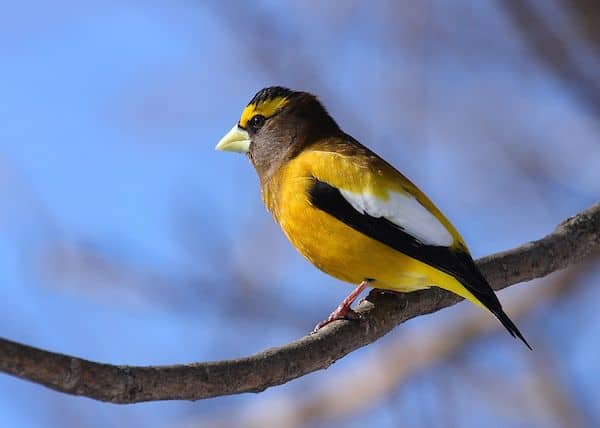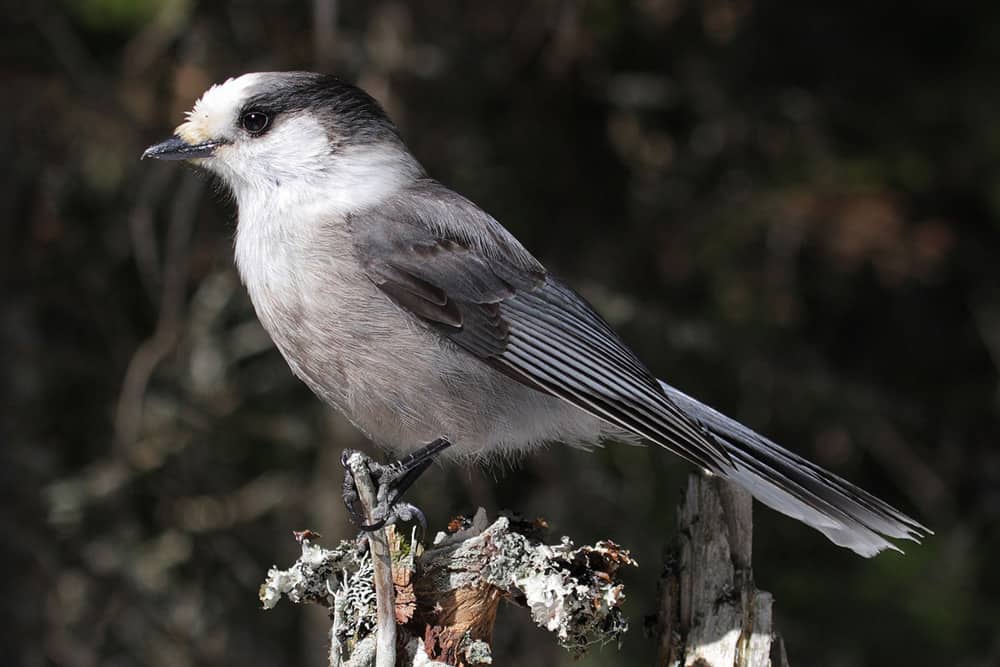Look For
The striking male evening grosbeak is a large, mustard-yellow finch with a big pale bill and a gold eyebrow. Huge white patches cover the bird’s back and flash in flight on the black wings. Females are mostly gray with light yellow patches and less white in the wings.
Coloration does not change seasonally. Like other winter finches, the evening grosbeak has a swooping flight style. But only the evening grosbeak flashes large white wing patches in flight. They are 8 inches in length.
Listen For
Loud and social, evening grosbeaks announce their presence with constant calling. Common call is a loud, descending pyeer! Also utters a raspy, tuneless whistle: pirrrt!
Find It
Listen for the evening grosbeak’s call note to find this unpredictable wanderer. Outside of nesting season, flocks move to where the food is—maples and box elders for their seeds and bird feeders for sunflower seed.
Feeding Behavior
Evening grosbeaks mostly eat seeds and nuts but also invertebrates, fruits, and insects. Interestingly, the evening grosbeak will sometimes take a fruit, such as a cherry, back to a perch to remove the flesh and skin to get the seeds inside. The evening grosbeak can put up to 125 pounds of pressure with its bill to crack a cherry pit.
Nesting Behavior
The male will court the female in the early spring by raising his head and tail, letting his wings droop and swaying back and forth, shaking slightly. If this impresses the female, she will begin building the nest in a conifer, often very high up. The nest is made of twigs and lined with softer materials, such as grasses and fine needles. Three to five eggs are laid and incubated by the female for two weeks, during which time the male often feeds her.
Wow!
The evening grosbeak was named for the mistaken impression that it sang only at dusk.




